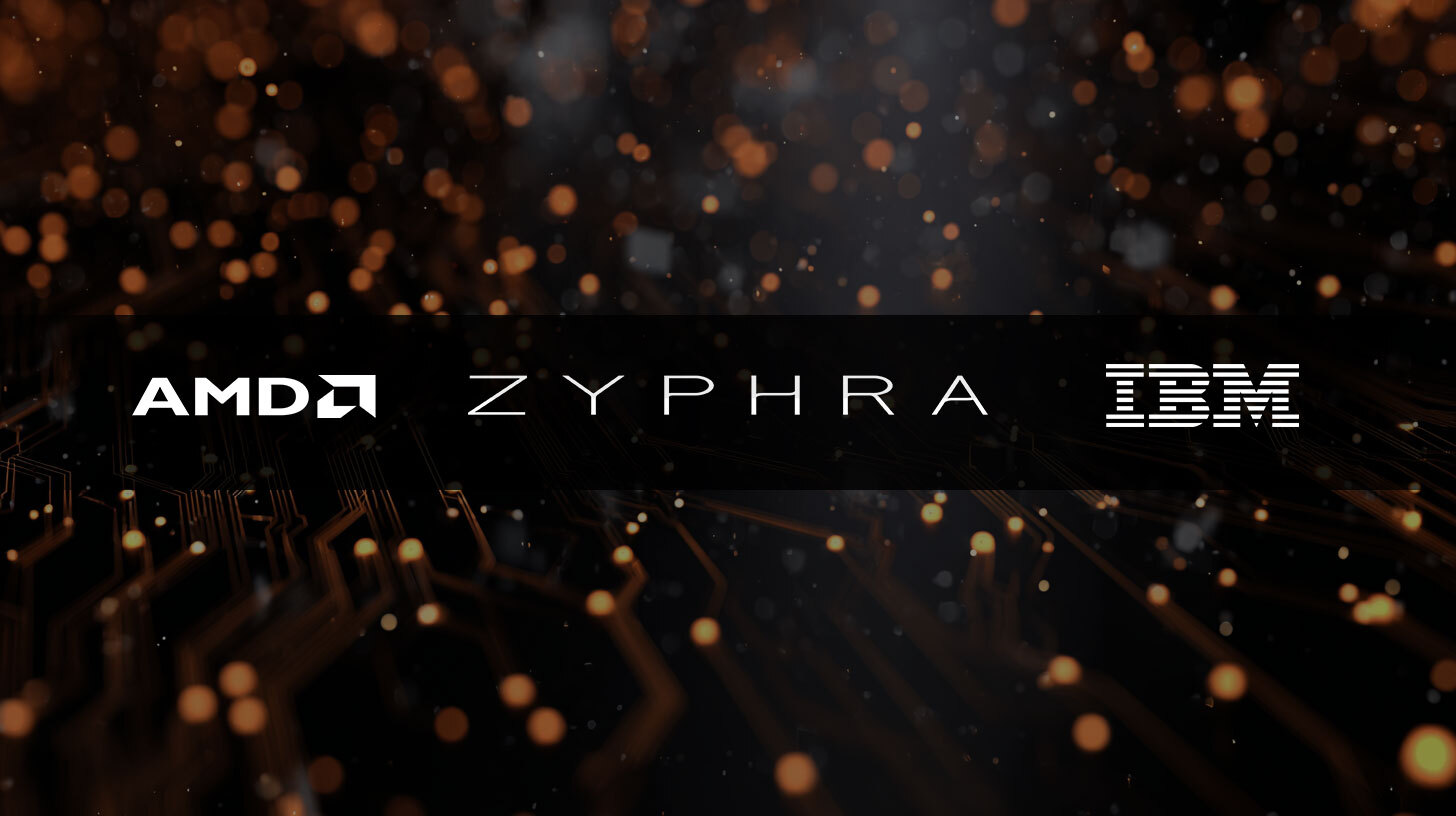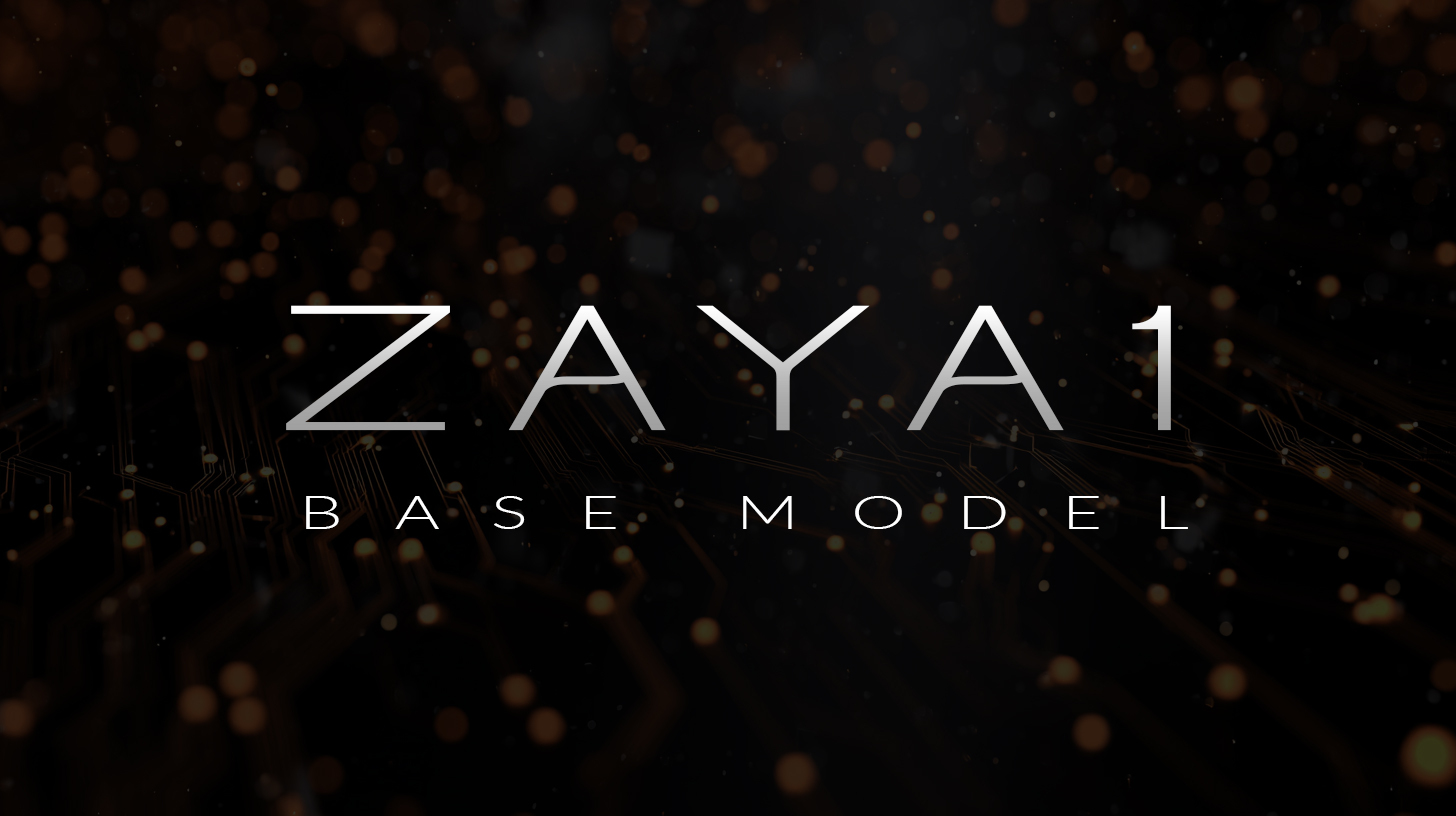Zyphra Demonstrates First Large Scale Training on Integrated AMD Compute and Networking Powered by IBM Cloud
Joint collaboration between Zyphra, AMD, and IBM delivers ZAYA1, the first large-scale Mixture-of-Experts foundation model trained entirely on an AMD platform using AMD Instinct MI300X GPUs, AMD Pollara networking & ROCm software.
ZAYA1 – Pretraining on Integrated AMD Platform: Compute, Network, and System Design
Zyphra announces a preview of ZAYA1, the first AI model trained entirely end-to-end on AMD’s hardware, software, and networking stack. Details of our pretraining efforts, hardware specific optimizations, and ZAYA1-base model benchmarks are described in the accompanying technical report published to arXiv.
Introducing ZR1-1.5B, a small but powerful math+code reasoning model
We introduce ZR1-1.5B, a small reasoning model trained extensively on both coding and mathematics problems with reinforcement learning. ZR1-1.5B outperforms many significantly larger general non-reasoning models on code generation, while maintaining performance close to state-of-the-art small reasoning models trained exclusively on math on competition-level evaluations.
Beta Release of Zonos-v0.1
Zyphra is excited to release our beta Zonos-v0.1, a pair of extremely expressive text-to-speech (TTS) models with high fidelity voice cloning. We are releasing both a transformer and hybrid 1.6B TTS models with an Apache 2.0 license.
The Mixture-of-PageRanks Retriever for Long-Context Pre-Processing
In this post, we describe our Mixture-of-PageRanks RAG system, which is built to perform long-context tasks in a highly computationally efficient manner. We describe key features of the algorithm and the SOTA results it achieves across a variety of long-context benchmarks.
Frontier Training Kernels for Transformers (FA2) and SSMs (Mamba2) on AMD Instinct MI300X Accelerators
In this blog, we demonstrate the first backwards kernels to surpass H100s for both transformers (Flash Attention v2) and hybrid models (Mamba2), which enables training foundation models on AMD Instinct MI300x accelerators.
Building Zyda-2, a 5 Trillion Token High-Quality Dataset, with NVIDIA NeMo Curator
Zyphra is excited to release Zyda2, a 5-trillion token dataset composed of filtered and cross-deduplicated DCLM, FineWeb-Edu, Zyda-1, and Dolma v1.7's Common Crawl portion. Leveraging NVIDIA NeMo Curator, we've dramatically accelerated data processing from 3 weeks to 2 days while reducing costs.
Zamba2-7B
Zyphra is excited to release Zamba2-7B, a state-of-the-art small language model. At the 7B scale, we outperform the leading models of Mistral, Google’s Gemma and Meta’s Llama3 series in both quality and performance. We believe Zamba2-7B is the leading model for running on-device and on consumer GPUs as well as for many enterprise applications which require a powerful but compact and efficient model for natural-language tasks.
Reaching 1B Context Length with RAG
We demonstrate a retrieval system extending any off-the-shelf LLM to 1B (billion) context on a standard CPU during inference time. These preliminary results suggest our algorithm is a promising approach for performing long-context tasks especially in compute constrained scenarios (on device, cost-effective on-prem & cloud etc).
NeuraNoC - A neuroscience-inspired packet switch network-on-chip (NoC)
Zyphra’s NeuraNoC is a pioneering packet-switched network-on-chip (NoC), named for its routing mechanism that resembles the spiking behavior of neurons in the brain by encoding processor connections as Bernoulli processes.
Zamba2-mini (1.2B)
Zyphra is excited to release Zamba2-mini, a state-of-the-art SLM for on-device applications. Zamba2-mini achieves highly competitive evaluation scores and performance numbers and fits in a tiny memory footprint of <700MB at 4bit quantization. Zamba2- mini (1.2B) ~ Llama2 7B
The Zyphra Training Cookbook
Training hybrid models is hard, and papers tend to gloss over the practical engineering work that goes into building good ones. The purpose of this cookbook is to enable other technical groups to hit the ground running when building their own hybrid (SSM, Transformer, MoE) models.
Understanding Graph-based RAG and Multi-Hop Question Answering
In this post, we discuss and illustrate the usefulness of graph-based RAG systems for multi-hop Question-Answering (QA) tasks. Multi-hop questions are those that require a chain of multiple retrieval steps to answer.
Edge LLMs: Benefits, Challenges, and Solutions
This blog post discusses the key factors to consider when deploying models on edge devices. We emphasize the significant hardware constraints of these devices, and identify techniques to efficiently utilize local hardware resources - quantization, low-rank adapters, and real-time parameter offloading from storage.
The Unreasonable Ineffectiveness of the Deeper Layers
We empirically study a simple layer-pruning strategy for popular families of open-weight pretrained LLMs, finding minimal degradation of performance on different question-answering benchmarks until after a large fraction (up to half) of the layers are removed.
Tree Attention: Topology-aware Decoding for Long-Context Attention on GPU clusters
Zyphra is excited to announce Tree Attention, a novel method for efficiently parallelizing multi-GPU transformer decoding with significant advantages in speed and memory.
Toward Conversational Agents with Context and Time Sensitive Long-term Memory
Effective retrieval from long-form conversational data faces two unique problems compared to static database retrieval.
Zyphra Launches Zamba2
An Efficient And Faster Small Language Model
Zyphra's Zyda
A 1.3T language modeling dataset it claims outperforms Pile, C4, arxiv
Zyphra Debuts Zyda
An LLM training dataset with 1.3T tokens
Zyphra Releases Zamba
An SSM-hybrid foundation model to bring AI to more devices
Zyphra Open-Sources BlackMamba
A Novel Architecture that Combines the Mamba SSM with MoE to Obtain the Benefits of Both
Zamba2-small (2.7B)
Zyphra is excited to release Zamba2-small, a 2.7B state-of-the-art (SOTA) small language model for on-device applications.











.png)













